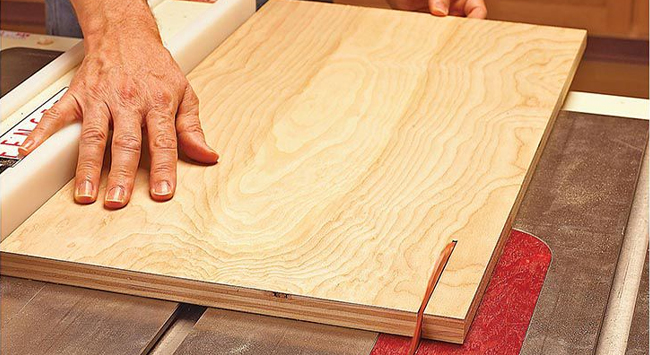Tuesday, April 30, 2024
|
Listen to this news
|

We often see that an initial step in hardwood manufacturing involves resizing random width boards to the precise widths needed for production. It is considered essential to any wood components in woodworking business. However, a common misconception exists that ripping your own lumber on a straight line rip saw is a bad sign, that the emotional and physical cost far outweighs the benefits of its backbreaking, tedious, and messy nature.
Manufacturers either do this in their own production facilities or they work with a trusted hardwood lumber supplier and purchase exact width SLR2E boards especially of Baillie Group, (moulder blanks), instead of random width lumber. This typically replaces or supplements what they produce themselves.
Now, let’s take a glance on the several benefits of hardwood ripping.
To lower operational costs
Maximising lumber yield is crucial when handling hardwood lumber, as even a 2% or 3% improvement in yield can significantly enhance performance. By purchasing lumber cut to exact widths, manufacturers can leverage the accuracy of their supplier’s machinery, the expertise of their operators, and the efficiencies gained from their supplier’s extensive cutting operations. This approach not only boosts yield but also helps in reducing the volume of lumber waste and the associated disposal costs.
Shift variable costs to fixed costs
When you rely on random width hardwood lumber you never quite know exactly how the bundles will work in your operation. When manufacturers purchase ripped to width blanks they take the guess work out of the hardwood lumber conversion process. It also helps shift variable costs of production to fixed costs since they can better track their overall lumber expenditures.
Improve the efficiency
Manufacturers achieve efficiency improvements by minimising the creation of unusable inventory and reducing the need to re-handle lumber in their warehouses. Historically, companies have been able to repurpose employees from lumber ripping tasks to other strategic roles, enhancing productivity in those areas as well.
Scalability
When business is thriving, there are limits to how much a manufacturing plant can ramp up production. Implementing double shifts, authorizing employee overtime, expediting raw material orders, and extending maintenance intervals can introduce a range of new challenges. One effective strategy to boost production is for customers to purchase moulder-ready hardwood blanks, which allows them to skip the process of converting random width lumber. This practice enables manufacturers to directly feed lumber into subsequent stages of their manufacturing process, thereby enhancing overall product output, especially since the ripping cell often acts as a production bottleneck.
Freight Savings
Manufacturers that utilise hardwood lumber in their production process many times require several truckloads of material each year. Reducing freight costs is always of interest. Depending on one’s specific cutting bill and inventory position, it is not uncommon for a company to experience 15% to 25% wood waste. When ordering in exact ripped to width lumber that matches your specific production process instead of traditional random width lumber you eliminate paying freight on this type of future waste. This is a cost savings that most have not fully considered but is achievable with hardwood rips.
Baillie Group is considered one of the pioneers in woodworking industry who provide the ultimate guide on hardwood ripping to the customers. If you consider utilising the ripping on hardwood, baillie group is the ultimate solution! They help woodworkers who generally work with cabinet parts, mouldings, ship lap and tongue and groove boards.
Source: Baillie Group
Read more news on: Woodworking , hardwood
Tags: hardwood specialist, lumber, wood, wood and panel, woodworking, woodworking industry
Comments: